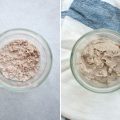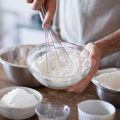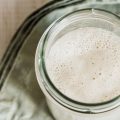Welcome to our how-to guide on replacing commercial yeast with a sourdough starter in your baking adventures. By harnessing the power of natural fermentation, you’ll unlock a world of flavors, improved digestibility, and nutritional benefits. Join us as we explore the steps and considerations for successfully incorporating sourdough starter into your favorite recipes. Let’s dive in and discover the wonders of sourdough baking!
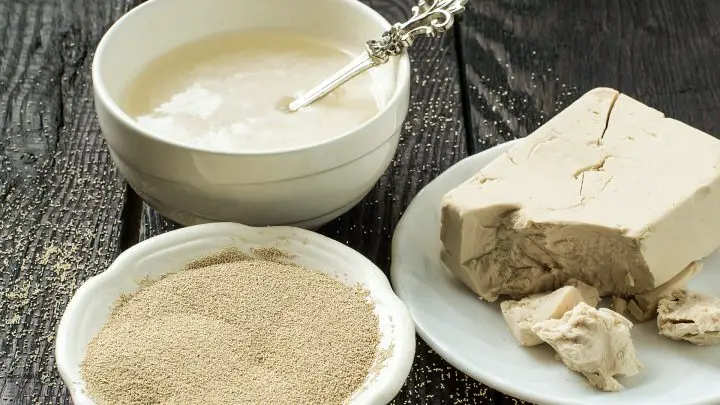
Table of Contents
- How is Yeast Different to Sourdough Starter?
- What is The Difference Between Natural Yeast and Sourdough Starter?
- Is Sourdough Starter Healthier Than Yeast?
- Homemade Yeast Bread Recipe Converted to a Sourdough Recipe
- Why Convert a Recipe to Sourdough?
- How to Convert Any Recipe to Sourdough
- Converting Sourdough Recipes to Yeast
- Significant Things To Consider When Converting Recipes to Sourdough
- Can I Add Sourdough Starter With Commercial Yeast to My Recipe?
- Yeast For Sourdough Starter
- FAQs
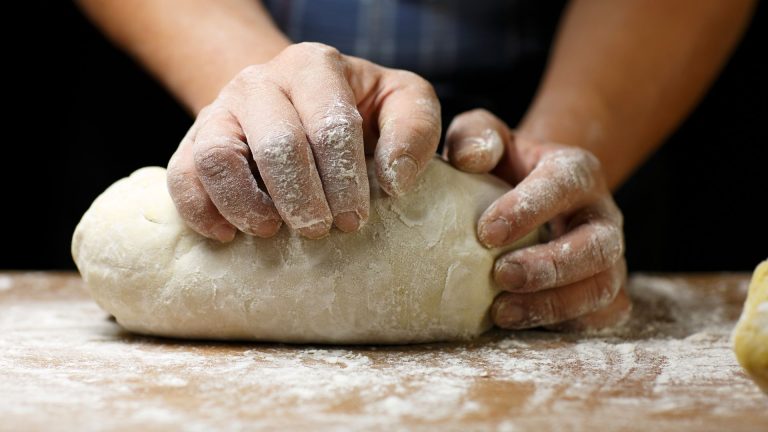
Homemade Yeast Bread Recipe Converted to a Sourdough Recipe
With a simple list of ingredients and a bit of patience, you’ll create a loaf with a delightful crust and a tender crumb.
Ingredients
- 300g active sourdough starter (100% hydration)
- 500g bread flour
- 10g salt
- 300ml water
Instructions
- In a large mixing bowl, combine the sourdough starter and water. Stir until well combined.
- Add the bread flour and salt to the bowl. Mix with a wooden spoon or your hands until a shaggy dough forms.
- Let the dough rest for about 30 minutes to allow the flour to hydrate fully.
- Begin the first round of stretching and folding. With wet hands, grab one edge of the dough, stretch it up, and fold it over the center of the dough. Repeat this process from all four sides of the dough. Cover the bowl and let it rest for 30 minutes.
- Repeat the stretching and folding process (Step 4) three more times at 30-minute intervals. This helps develop gluten and strengthen the dough.
- After the final round of stretching and folding, cover the bowl and let the dough ferment for about 2-4 hours, or until it has doubled in size. The fermentation time will depend on the temperature and activity of your sourdough starter.
- Once the dough has doubled, lightly flour a work surface and gently turn out the dough onto it. Shape the dough into a round or desired shape, being careful not to deflate it too much.
- Place the shaped dough into a proofing basket or a well-floured bowl. Cover and let it rise for the final fermentation. This can take anywhere from 1-4 hours, depending on the temperature.
- Preheat the oven to 450°F (230°C) and place a baking stone or baking sheet inside to preheat as well.
- Once the dough has completed its final rise, carefully transfer it onto the preheated baking stone or sheet. Score the top of the dough with a sharp knife or bread lame.
- Bake the bread for 30-35 minutes, or until it develops a golden brown crust and sounds hollow when tapped on the bottom.
- Remove the bread from the oven and let it cool on a wire rack before slicing and enjoying.
How is Yeast Different to Sourdough Starter?
Yeast and sourdough starter are different in terms of their composition and fermentation processes.
Yeast is a single-celled organism, typically used as a commercial or active dry yeast for bread baking. It provides a fast and consistent rise to the dough, primarily through the production of carbon dioxide.
Is Sourdough Starter The Same as Yeast?
Sourdough starter is not the same as yeast.
While yeast is a specific strain of microorganisms, sourdough starter is a mixture of wild yeast and lactobacilli bacteria, cultivated through a process of fermentation. The starter is made by combining flour and water and allowing it to ferment over several days, developing a robust microbial community.
Unlike yeast, which offers a quick rise, sourdough starter provides a more complex flavor profile and a slower fermentation process, resulting in a unique tanginess and enhanced texture in bread and other baked goods.
What is The Difference Between Natural Yeast and Sourdough Starter?
Natural yeast and sourdough starter are similar in that they both involve the use of wild yeast for leavening, but they differ in their composition and preparation.
Natural yeast, also known as wild yeast or spontaneous fermentation, refers to the yeast naturally present in the environment, such as on the surface of fruits or in the air. It is captured and used directly in breadmaking without any additional ingredients or cultivation. Natural yeast can be collected by creating a homemade “yeast water” or by utilizing natural leavening agents like grape skins or apple peels.
On the other hand, a sourdough starter is a mixture of flour and water that has been fermented to cultivate a robust microbial community of wild yeast and lactobacilli bacteria. The process of creating a sourdough starter involves regular feedings and fermentation over several days or weeks, allowing the natural yeasts and bacteria to multiply and develop a distinctive flavor profile.
While both natural yeast and sourdough starter rely on wild yeast for leavening, a sourdough starter is a carefully cultivated and maintained culture that contains a broader range of microorganisms, including lactobacilli bacteria, which contribute to the unique tanginess and complex flavors associated with sourdough bread.
Health Benefits of Sourdough
Sourdough bread offers several potential health benefits compared to bread made with commercial yeast. Some of the benefits of sourdough include:
- Improved Digestibility: The long fermentation process of sourdough breaks down gluten, making it easier to digest for individuals with mild gluten sensitivities. The natural enzymes and beneficial bacteria in sourdough can also enhance overall digestion.
- Nutrient Absorption: Sourdough fermentation increases the availability of certain nutrients in bread, making them more easily absorbed by the body. This includes enhancing the bioavailability of minerals like iron, zinc, and magnesium.
- Lower Glycemic Index: Sourdough bread generally has a lower glycemic index compared to bread made with commercial yeast. This means it has a less significant impact on blood sugar levels, which can be beneficial for blood sugar control.
- Prebiotic Potential: Sourdough bread contains prebiotics, which are compounds that nourish beneficial gut bacteria. These prebiotics, along with the natural fermentation process, can promote a healthy gut microbiome.
- Longer Shelf Life: The acidity of sourdough bread helps inhibit the growth of mold and extends its shelf life naturally, reducing the need for preservatives or artificial additives.

Is Sourdough Starter Healthier Than Yeast?
Comparing the health benefits of sourdough starter and yeast is not straightforward, as they offer different advantages.
Sourdough starter has some potential health benefits due to its fermentation process. The natural fermentation breaks down gluten and phytic acid, making it potentially easier to digest and enhancing nutrient absorption.
Additionally, sourdough has a lower glycemic index compared to bread made solely with commercial yeast, which may be beneficial for blood sugar control. However, it’s important to note that individual health considerations vary, and factors such as portion size, overall diet, and personal sensitivities should be taken into account.
Yeast, on the other hand, is a good source of B vitamins and can provide a quick rise, making it suitable for various baking applications.
Homemade Yeast Bread Recipe Converted to a Sourdough Recipe
Get ready to embark on a flavorful and satisfying journey of homemade sourdough bread with this converted recipe. By harnessing the natural power of a sourdough starter, you’ll experience the tangy aroma and distinct flavors that only sourdough can provide. With a simple list of ingredients and a bit of patience, you’ll create a loaf with a delightful crust and a tender crumb.
Ingredients
- 300g active sourdough starter (100% hydration)
- 500g bread flour
- 10g salt
- 300ml water
Instructions
- In a large mixing bowl, combine the sourdough starter and water. Stir until well combined.
- Add the bread flour and salt to the bowl. Mix with a wooden spoon or your hands until a shaggy dough forms.
- Let the dough rest for about 30 minutes to allow the flour to hydrate fully.
- Begin the first round of stretching and folding. With wet hands, grab one edge of the dough, stretch it up, and fold it over the center of the dough. Repeat this process from all four sides of the dough. Cover the bowl and let it rest for 30 minutes.
- Repeat the stretching and folding process (Step 4) three more times at 30-minute intervals. This helps develop gluten and strengthen the dough.
- After the final round of stretching and folding, cover the bowl and let the dough ferment for about 2-4 hours, or until it has doubled in size. The fermentation time will depend on the temperature and activity of your sourdough starter.
- Once the dough has doubled, lightly flour a work surface and gently turn out the dough onto it. Shape the dough into a round or desired shape, being careful not to deflate it too much.
- Place the shaped dough into a proofing basket or a well-floured bowl. Cover and let it rise for the final fermentation. This can take anywhere from 1-4 hours, depending on the temperature.
- Preheat the oven to 450°F (230°C) and place a baking stone or baking sheet inside to preheat as well.
- Once the dough has completed its final rise, carefully transfer it onto the preheated baking stone or sheet. Score the top of the dough with a sharp knife or bread lame.
- Bake the bread for 30-35 minutes, or until it develops a golden brown crust and sounds hollow when tapped on the bottom.
- Remove the bread from the oven and let it cool on a wire rack before slicing and enjoying.
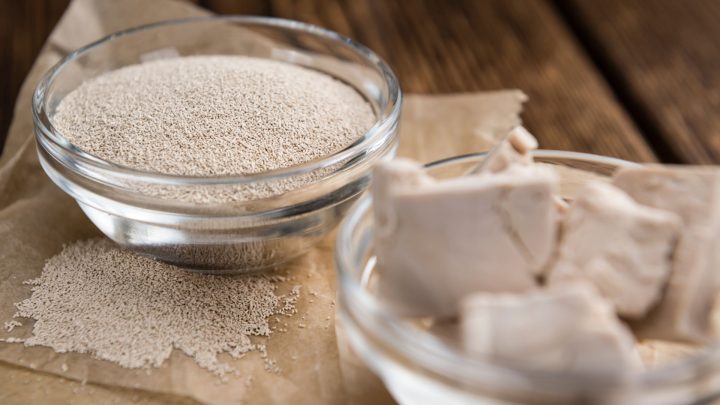
Why Convert a Recipe to Sourdough?
Converting a recipe to sourdough offers two main benefits.
Firstly, it creates more digestible and nutritious baked goods by breaking down gluten and phytic acid during fermentation. Secondly, it imparts more complex flavors, adding a delightful tanginess and depth to the final product.
More Digestible and Nutritious
By fermenting with sourdough, the natural fermentation process breaks down gluten and phytic acid, making the baked goods more digestible for individuals with gluten sensitivity. It can also enhance nutrient absorption, allowing for better utilization of vitamins and minerals present in the flour.
More Complex Flavors
Sourdough fermentation introduces wild yeast and lactobacilli, resulting in a unique and tangy taste. The slow fermentation process develops complex flavors, adding depth and character to breads and other baked goods.
The resulting flavor profile is often richer, more nuanced, and highly sought after by bread enthusiasts.
How to Convert Any Recipe to Sourdough
Converting any recipe to sourdough can be a rewarding process.
To do so, start by assessing the hydration level of your sourdough starter. Adjusting the hydration of the starter to match the recipe’s desired consistency is crucial.
Hydration of Sourdough Starter Matters
A high hydration starter (around 100% hydration or more) will add more moisture to the dough, while a stiffer starter (around 60-75% hydration) will have a denser effect.
This adjustment ensures that the dough maintains the proper texture and hydration.
How Much Sourdough Starter is Equivalent to Yeast?
To determine the equivalent amount of sourdough starter in place of yeast, a general guideline is to use around 20-30% of the total flour weight in the recipe. Adjustments may be needed based on the desired rise time and flavor intensity.
Experimentation and experience will help fine-tune the amount of sourdough starter needed for each specific recipe.
How Long Should I Leave The Dough to Rise Compared to a Yeast Recipe?
When using sourdough starter instead of yeast, the rising time of the dough will typically be longer.
Sourdough fermentation is a slower process compared to the rapid rise of commercial yeast. The time required for the dough to rise will depend on various factors such as the strength and activity of your sourdough starter, the temperature of the environment, and the desired flavor and texture of the final product.
Generally, allowing the dough to rise at a cooler temperature (e.g., overnight in the refrigerator) can result in more complex flavors and a better texture.
Rising Times Will Be Very Different
In sourdough baking, rising times can significantly differ from those of yeast-based recipes.
While yeast provides a quick rise, sourdough requires a longer fermentation period due to the natural leavening process of wild yeast and lactobacilli bacteria. Depending on the recipe, it is common for the first rise (bulk fermentation) of sourdough dough to take several hours or even overnight. Subsequent rises or shaping stages may also require longer intervals.
Patience and attentiveness are essential when working with sourdough, as the rising times can vary based on factors such as temperature, hydration, and the strength of the starter. Regular observation and understanding the signs of proper fermentation will help achieve optimal results.
The Flour and Water Adjustments For a Sourdough Recipe
When using a sourdough starter, it’s important to account for the water content in the starter itself.
Since sourdough starter is a combination of flour and water, it’s necessary to reduce the amount of water in the recipe to compensate for the hydration contributed by the starter. This adjustment prevents the dough from becoming overly wet and difficult to handle.
As a general guideline, subtract an equivalent amount of water from the recipe for every portion of starter added.
Converting Sourdough Recipes to Yeast
Converting sourdough recipes to yeast-based ones is a simple way to achieve quicker results while still enjoying delicious bread.
For a quick bread recipe, substitute the sourdough starter with an equal amount of active dry or instant yeast. Adjust the rising time accordingly, as yeast provides a faster rise compared to the slower fermentation of sourdough.
This adaptation allows you to enjoy the convenience of yeast-based baking while still infusing your bread with enticing flavors and textures.
Quickbread Recipe
In a quick bread recipe, such as muffins or banana bread, omitting the sourdough starter and replacing it with yeast isn’t necessary. Quick breads typically rely on a chemical leavening agent like baking powder or baking soda for their rise. These leavening agents react quickly when combined with liquid and heat, resulting in a speedy and consistent rise.
Enjoy the simplicity of quick bread recipes, knowing that the absence of sourdough won’t compromise the delectable treats you can create.
Significant Things To Consider When Converting Recipes to Sourdough
How Much Sugar Does The Recipe Contain?
Take into account the sugar content in the original recipe. Sourdough fermentation can be affected by excess sugar, slowing down or inhibiting the rise. Adjust the amount of sugar or consider using alternative sweeteners that won’t interfere with the fermentation process.
Never De-Gas Sourdough
Unlike recipes using commercial yeast, never de-gas or punch down sourdough during the fermentation process. Sourdough relies on the air pockets created by the fermentation for its structure and rise. Preserve the delicate structure by handling the dough gently to maintain its optimal texture and rise.
Can I Add Sourdough Starter With Commercial Yeast to My Recipe?
Yes, you can add sourdough starter along with commercial yeast to your recipe, creating a unique combination of flavors and textures.
The sourdough starter will contribute its characteristic tanginess and enhance the overall depth of flavor, while the commercial yeast will provide a reliable and fast rise. Experiment with the proportions to achieve the desired balance between the two leavening agents and enjoy the best of both worlds in your baked goods.
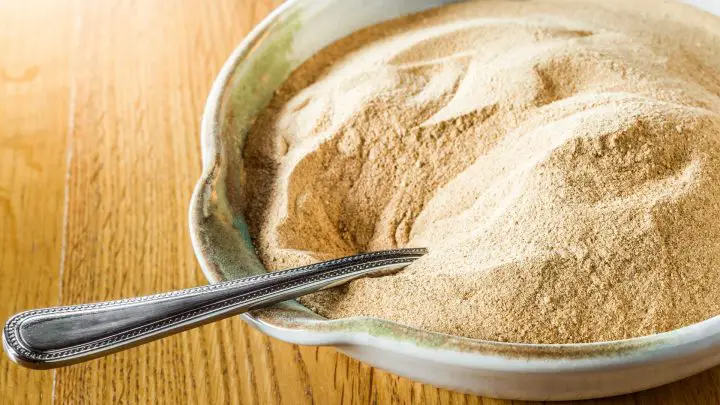
Yeast For Sourdough Starter
Substituting yeast with a sourdough starter adds depth, complexity, and unique flavors to your baked goods. The slow fermentation process of sourdough enhances digestibility and nutritional benefits. Experiment with different recipes, fermentation techniques, and flour types to unleash the full potential of sourdough and elevate your baking to new heights. Enjoy the delicious and wholesome results of your homemade sourdough creations!
Want to know more about the differences between yeast and sourdough? Check out: Sourdough vs Yeast: What’s the difference?
FAQs
Can You Use Sourdough Starter and Yeast?
Yes, you can use both sourdough starter and yeast in your bread-making process. While traditional sourdough bread relies solely on the natural fermentation of wild yeast present in the sourdough starter, incorporating commercial yeast can provide additional leavening power and help speed up the rising process. This combination allows you to enjoy the unique flavors and characteristics of sourdough while achieving a more predictable rise and consistency in your bread.
Why Substitute Yeast For Sourdough?
Substituting yeast for sourdough brings a unique and enticing flavor profile to bread. While yeast provides a quick rise, sourdough offers a depth of flavor derived from the fermentation process. Sourdough’s natural, tangy taste adds complexity and character, enhancing the overall bread experience.
Can You Use Sourdough Starter For Other Breads?
Sourdough starter can be used for other breads due to its natural leavening properties and unique flavor. The wild yeast and lactobacilli present in the starter provide a slow fermentation process, resulting in a more complex and tangy taste. This versatile starter can be incorporated into various bread recipes, including artisan loaves, baguettes, and even pastries.
How to Increase Yeast in Sourdough Starter?
To decrease the yeast in a sourdough starter, you can adjust the feeding routine. Start by reducing the amount of flour and water used during feedings to slow down yeast growth. Feed the starter less frequently, allowing more time for lactic acid bacteria to develop. Storing the starter in a cooler environment can also help inhibit yeast activity. With consistent adjustments over time, the yeast population will naturally decrease, resulting in a milder and less yeasty sourdough flavor.
How Much Sourdough Starter to Use in a Recipe?
The amount of sourdough starter to use in a recipe depends on the desired flavor and leavening strength. As a general guideline, use around 20-30% of the total flour weight in the recipe. Adjustments may be needed based on the specific recipe and the desired level of sourness. Experimentation and experience will help determine the ideal amount of sourdough starter for each unique bread recipe.

